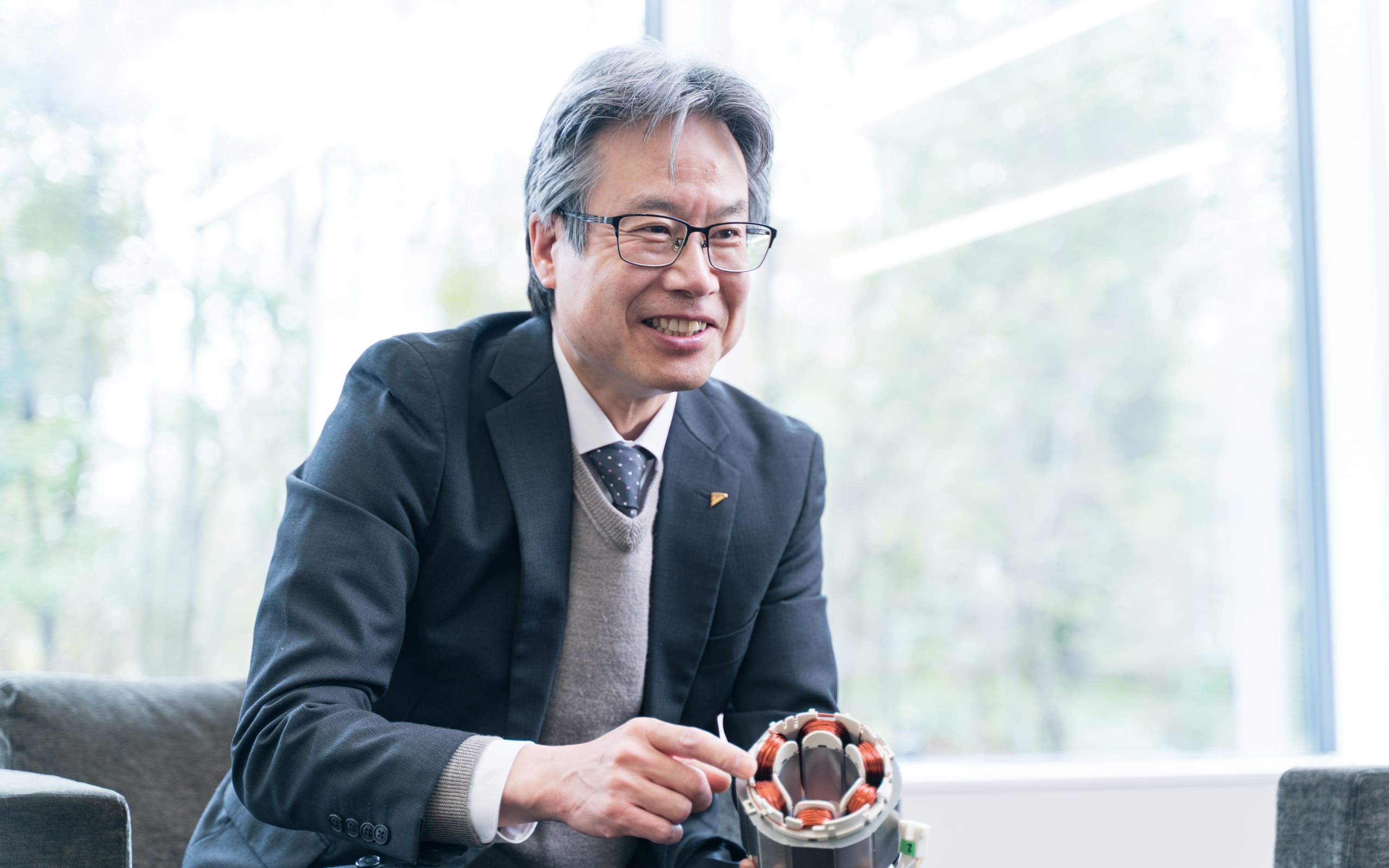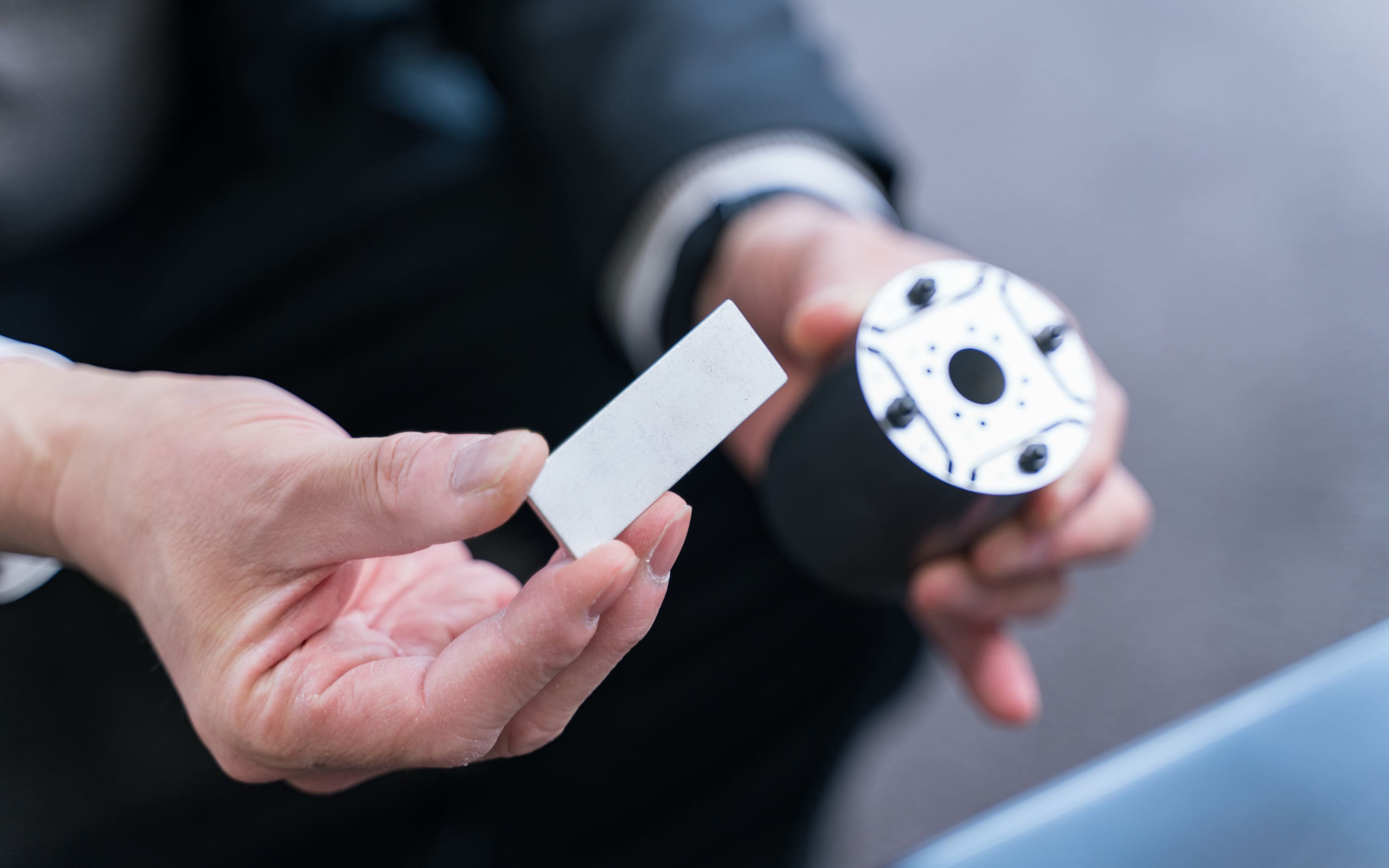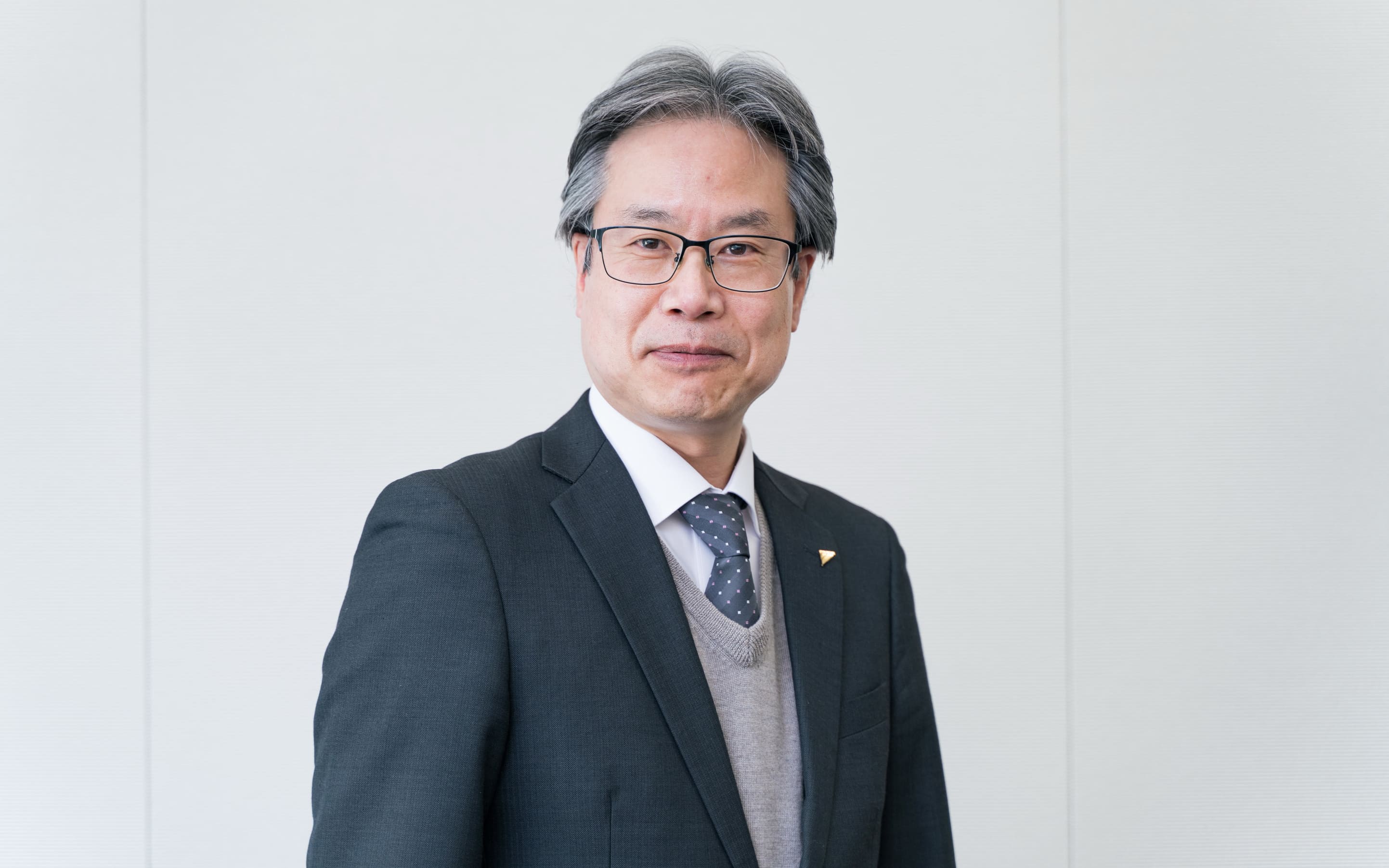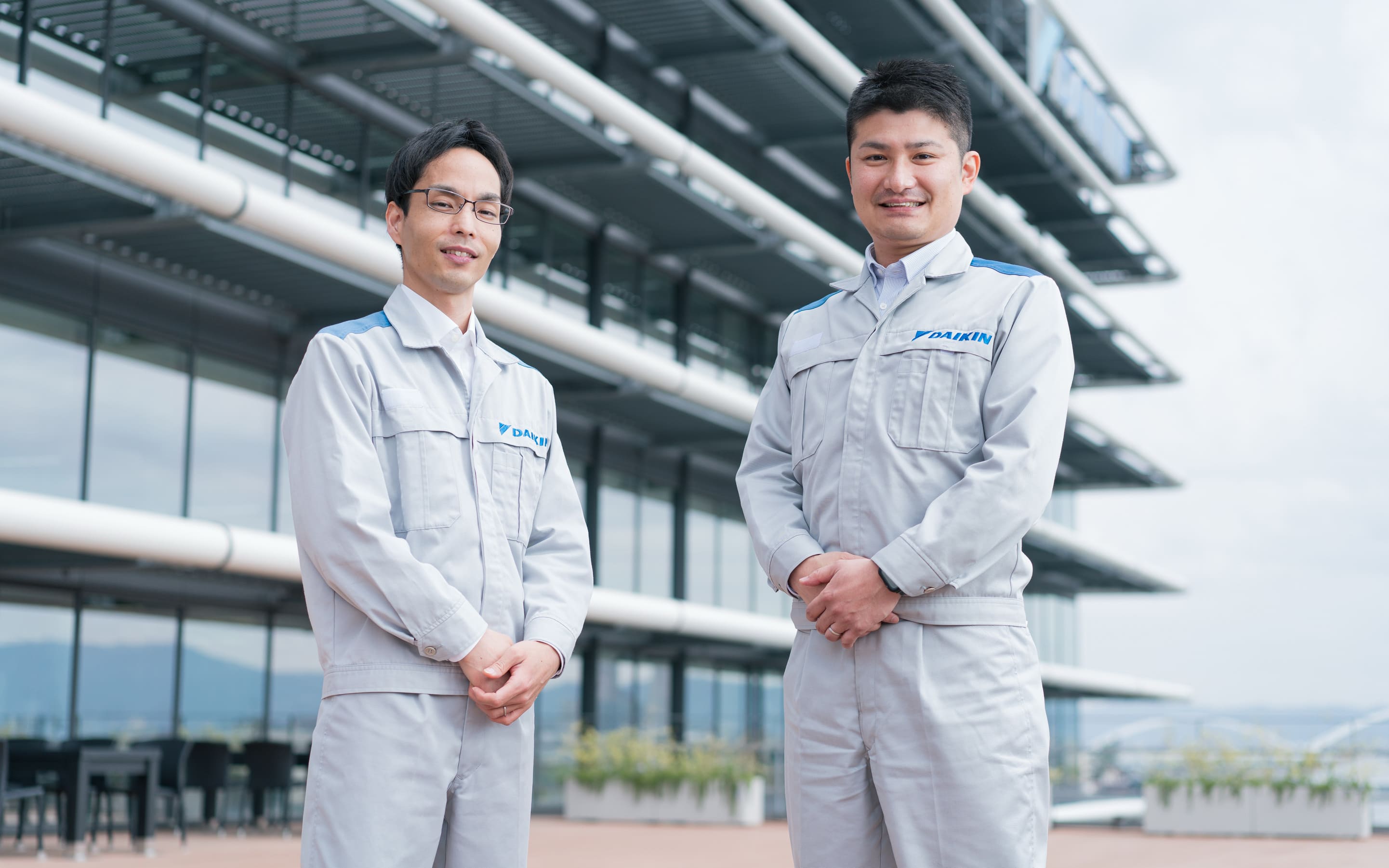Among the components in an air conditioner, the motor is an important component that significantly affects the various indicators for evaluating air conditioners such as energy efficiency, configuration, and noise. When suitable general-purpose motors are not available, we typically rely on in-house development of motors.
Daikin Industries began developing and mass-producing specially configured motors for use in air conditioners and hydraulic equipment in the early 1990s. We have also developed firsts in the industry and the world for mass-produced motors with specific applications starting with the embedded magnet motor (IPM motor), which we call a reluctance DC motor, followed by the SR motor without magnets for hydraulic pumps, magnetic bearing actuators for large, high-speed rotating motors up to 20,000 rpm, and outer rotor motors with a stator placed inside the motor that rotate on the outside.
NEWS
Smaller, More Powerful Reluctance DC Motors That Are Also Quieter
FEATURE
2022.10.25
Known primarily as an air conditioner manufacturer, Daikin Industries is less famous for being the industry leader in development of application-specific motors of various configurations and dimensions. Nevertheless, not only does its motor development activities exceed those of specialized motor manufacturers, but Daikin also leads both the industry and world in the mass production of motors. Motors are indispensable for air conditioners, and Daikin utilizes its own unique development techniques to expertly mass-produce reluctance DC motors for air conditioners that are smaller, more powerful, and quieter. Unsurprisingly, these advances have generated great interest in the industry for the reasons behind Daikin’s success.
Chief Engineer Akio Yamagiwa of the Technology Innovation Center, who has led motor development at Daikin for many years, talks about the strengths of Daikin motors and the technologies supporting them.
Chief Engineer Akio Yamagiwa of the Technology Innovation Center, who has led motor development at Daikin for many years, talks about the strengths of Daikin motors and the technologies supporting them.
Industry-leading development capabilities in application-specific motors

Introduced computer simulation ahead of competitors
To develop a motor with a new configuration, it is necessary to make a prototype each time, which slows down the development process. Daikin has been using computer simulations since the 1990s, which is before computer analysis became a common practice for motor development, to study how motor rotation affects magnetic flux flow, magnetic loss, and the application of stress as well as coupling with motor control. Various patterns are examined to determine the optimum configurations and parameters (magnetic flux amount, rotation characteristics, etc.) for motor control.
While prototypes can be created based on the results of computer simulations, no evaluation and testing equipment exist for motors with new configurations. Together with the computer analysis, we have also developed our own motor evaluation testing equipment and have been evaluating whether prototype motors meet specifications.
In new motor development, it is necessary to use the same standards for our products from design to evaluation, and Daikin has "solid development capability" to develop motors from start to finish.
While prototypes can be created based on the results of computer simulations, no evaluation and testing equipment exist for motors with new configurations. Together with the computer analysis, we have also developed our own motor evaluation testing equipment and have been evaluating whether prototype motors meet specifications.
In new motor development, it is necessary to use the same standards for our products from design to evaluation, and Daikin has "solid development capability" to develop motors from start to finish.
Nonstop improvements since 1996 in mass production of reluctance DC motors
The first mass production of the reluctance DC motor, which is currently regarded as the most efficient motor by Daikin Industries, was in 1996. This was at a time when standard induction motors were still being used for air conditioners in Japan. That was also when air conditioners were considered a luxury item because of their poor energy efficiency and high electricity costs. Since then, we have been promoting energy savings and have been constantly improving our reluctance DC motors with permanent magnets in the rotor to increase energy efficiency. The rotor magnets are arranged in a V-shape to eliminate the bias of the magnetic flux toward the edges and to improve torque while reducing losses, resulting in a smaller size and higher torque output.

However, even with a compact size, high efficiency, and high torque output, loud air conditioners are undesirable. To prevent noise during motor rotation, a hole is provided on the stator side to release air hammer, and the permanent magnet is divided vertically, while the rotor is skewed to slightly change the angle in a step-like manner to shift the timing when vibration is generated and to mutually cancel out the vibration. This structure has succeeded in reducing size and increasing efficiency while suppressing vibration and noise.
The technologies related to these structures have been patented and have been used in air conditioners and other products as Daikin proprietary technologies for many years. Furthermore, to conserve resources and reduce the cost of the motor itself, we have made a series of improvements unmatched by any other company. One such improvement was achieved by reducing the use of heavy rare earths and adopting highly magnetic neodymium magnets which reduced the amount of heavy rare earths to 40%. Similarly, we have successively made many other advances that no other company can duplicate.
The technologies related to these structures have been patented and have been used in air conditioners and other products as Daikin proprietary technologies for many years. Furthermore, to conserve resources and reduce the cost of the motor itself, we have made a series of improvements unmatched by any other company. One such improvement was achieved by reducing the use of heavy rare earths and adopting highly magnetic neodymium magnets which reduced the amount of heavy rare earths to 40%. Similarly, we have successively made many other advances that no other company can duplicate.
Developing optimal motors and inverters in tandem is Daikin’s strength
To maximize motor efficiency, it is important to combine it with an inverter. In fact, many areas of the computer analysis are also caused by inverter operating factors and parameters. The motor development department may propose an ideal inverter, or conversely, the inverter development department may make a request for the motor. While it can be said that motor and inverter development are inextricably connected, many air conditioner manufacturers tend to vertically divide the development of motors and inverters, making any substantial collaboration in development impossible.
One of the greatest strengths of motor development at TIC is the teamwork with the Inverter Development Department. The inverters and motors used in air conditioners all have their own developmental constraints, regulations, standards, and other restrictions that must be discussed for each application and need to ensure that the ideal situation for the development of one component does not interfere with the ideal situation of the other.
From here, we can increase the overall energy efficiency of the air conditioner by installing the motor and inverter that each of us considered to be the best, eliminate waste, and realize downsizing and quietness. The history of development at Daikin Industries has been one of cooperation between development departments, and this is a strength that other manufacturers do not have.
One of the greatest strengths of motor development at TIC is the teamwork with the Inverter Development Department. The inverters and motors used in air conditioners all have their own developmental constraints, regulations, standards, and other restrictions that must be discussed for each application and need to ensure that the ideal situation for the development of one component does not interfere with the ideal situation of the other.
From here, we can increase the overall energy efficiency of the air conditioner by installing the motor and inverter that each of us considered to be the best, eliminate waste, and realize downsizing and quietness. The history of development at Daikin Industries has been one of cooperation between development departments, and this is a strength that other manufacturers do not have.
Continuing to develop unique motors with our original development methods.
Daikin has developed and mass-produced new motors for a variety of applications, including air conditioners, hydraulic equipment, hybrid construction equipment, and micro-hydropower generation. Many of these developments are both industry and world firsts, technologies that no one else has ever developed. It is no exaggeration to say that we have a development capability that would make even a specialized motor manufacturer envious.
We plan to continue developing motors that are currently unimaginable, including development to eliminate the heavy rare earth content of neodymium magnets in current reluctance DC motors and development to achieve the same level of performance without employing magnets using expensive rare earths such as neodymium. The development of a reluctance DC motor equipped with a neodymium magnet was made possible by receiving magnet data from a magnet manufacturer of a magnet still in the development process, analyzing it, and rapidly determining that it could be used. The starting point of the development was a place that ordinary people would not pay attention to.
This out-of-the-box thinking that finds development clues in places where no one else would look has led to a history of application-specific motor development with originality that no other company can match and development of reluctance DC motors with a level of performance that no other company can match.
We plan to continue developing motors that are currently unimaginable, including development to eliminate the heavy rare earth content of neodymium magnets in current reluctance DC motors and development to achieve the same level of performance without employing magnets using expensive rare earths such as neodymium. The development of a reluctance DC motor equipped with a neodymium magnet was made possible by receiving magnet data from a magnet manufacturer of a magnet still in the development process, analyzing it, and rapidly determining that it could be used. The starting point of the development was a place that ordinary people would not pay attention to.
This out-of-the-box thinking that finds development clues in places where no one else would look has led to a history of application-specific motor development with originality that no other company can match and development of reluctance DC motors with a level of performance that no other company can match.

Akio Yamagiwa
Chief Engineer, Technology and Innovation Center
Joined the company in April 1990. Born in Shiga Prefecture. Without motors, the world would not move. As a pioneer in the development of motors, which are the driving force behind the world, we have always been at the forefront of motor development.
Chief Engineer, Technology and Innovation Center
Joined the company in April 1990. Born in Shiga Prefecture. Without motors, the world would not move. As a pioneer in the development of motors, which are the driving force behind the world, we have always been at the forefront of motor development.
Related article







